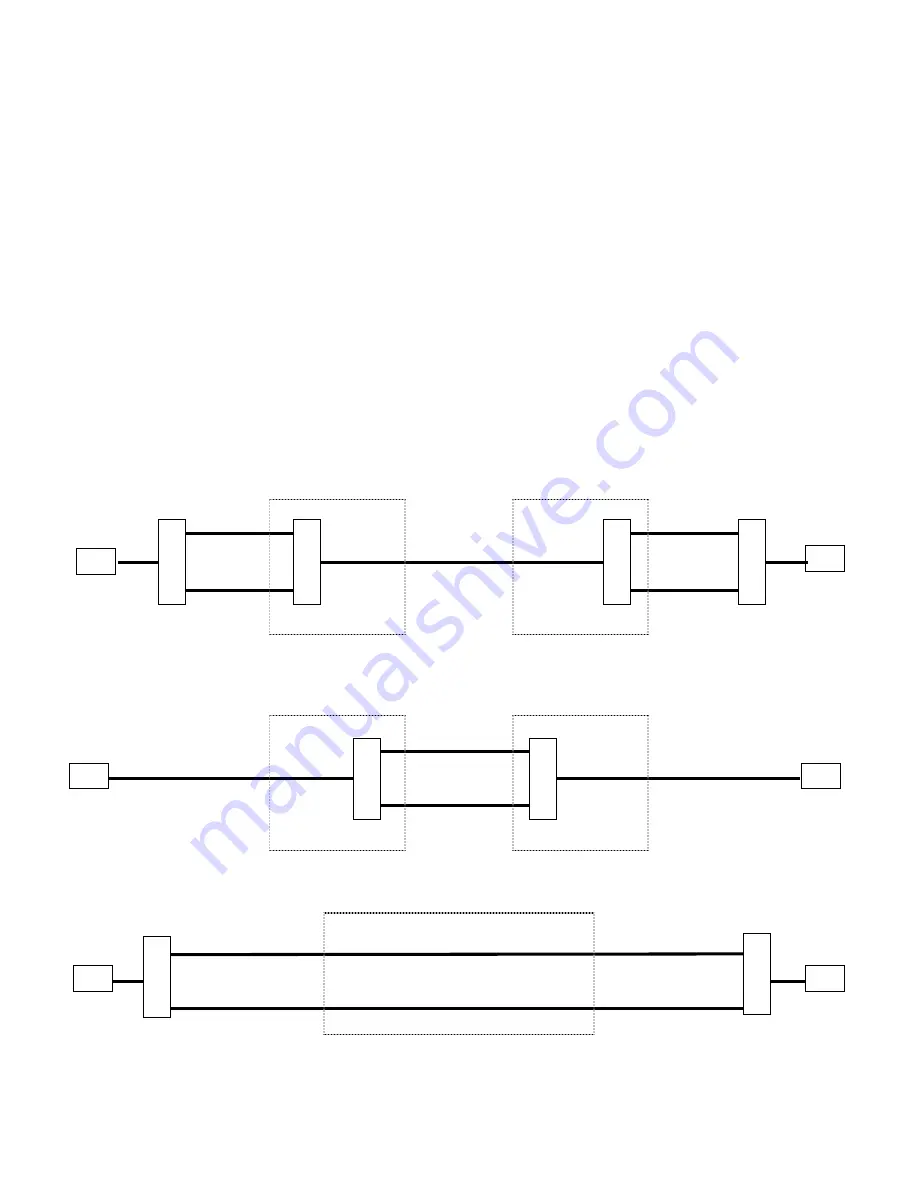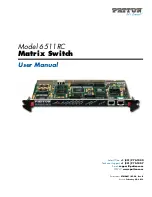
1558A APS
3-2
Operation
1
5
5
8
CO #1
CO #2
1
5
5
7
1
5
5
7
1
5
5
8
DTE
T1, A
IXC Network
CO #2
CO #1
IXC Network
T1 ACCESS
1
5
5
7
1
5
5
7
Master
Slave
Slave
Master
T1, B
T1, A
T1, B
T1, A
T1, B
IXC Local Loop APS application, both ends
IXC Network APS application
Master
Slave
DTE
DTE
DTE
T1 ACCESS
Telco and/or IXC Network
1
5
5
8
1
5
5
8
T1, A
T1, B
Customer Provided end-to-end APS Application
Master
Slave
DTE
DTE
T1, A
T1, B
Figure 3-1
Typical APS Applications
3.2.5
CSU Loopbacks
Two ESF CSU loopbacks are provided in the 1558A unit
(CSU Line Loop and CSU Payload Loop). These loops can
be activated and deactivated by TR 54016 ESF messages, or
Inband per TR 62411. To insure maximum service availabil-
ity, the following special conditions shall be applied to CSU
loopback actuation via the ESF data link messages:
• A CSU Line Loop or Payload can’t be activated on the
active path.
• If the CSU Line Loop or Payload Loop activate signal is
received by both paths simultaneously, no change of LB
state shall occur, regardless of their current states.
The “one-way” protection characteristic of the APS can
result in split-service operation. That is, service from the
1558A near APS to the 1558A far APS via one access path
while the 1558A far APS to the 1558A near APS service is
on the other access path. This is desirable to minimize ser-
vice disruptions. However, normal maintenance and fault
isolation techniques can’t be carried out while service is
being delivered in the split mode. Service to and from the
APS must be forced to a common access, either manually or
via maintenance message, before the standby path LB can
be activated.
3.2.6
Forced/Locked Capability
A manual path select control is provided on the APS which
selectively forces service to either Path A or Path B and
effectively inhibits the other path from accepting service.
The manual service select control supersedes all automatic
















































